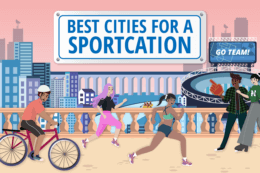Almost half of Australians admit the rising cost-of-living has impacted their mental health with young people most impacted, according to a new study by Compare the Market.
In this index of cruise ports, we look at a variety of factors and rank ports around the world.
Australians have relied even more on the bank of parents and grandparents to save money amid cost-of-living pressures, according to the latest research by Compare the Market.
4 Jul 2025 13:00
In this index of cruise ports, we look at a variety of factors and rank ports around the world.
19 Jun 2025 09:00
What do people really want in a home? Find out which home features buyers want most – and which ones they can live without.
16 Jun 2025 13:00
A new survey explores Australian, Canadian and American travel budgets, what they've overspent on holiday, and how they're changing their plans to save money.
10 Jun 2025 10:11
With crime rates on the rise, watch theft is a major worry for luxury watch owners. Find out the top watch crime capitals and read our safety tips today.
9 Jun 2025 15:50
Compare the Market AU crunches the data and finds the countries with the longest and most active lives across the globe. See the Active Life Vitality Index results here.
2 Jun 2025 08:50
What home amenities are people prepared to give up for city living? In this survey, Compare the Market AU finds out.
29 May 2025 09:00
Lazing around on the beach isn’t everyone’s cup of tea! We’ve listed the best cities around the world for a sporty holiday. Did your area make the cut?
27 May 2025 09:00
Not all cities have the same prices for used cars. Compare the Market AU analysis reveals the cities with the cheapest average prices for various countries.
19 May 2025 11:20
Compare the Market has gathered construction price change data for 2025, plus current average dollar amount figures for new residential homes. Read on here.
12 May 2025 10:45
In this study, Compare the Market AU looks at the costs of different surgeries across the world. Which is the most expensive? Click to find out.












